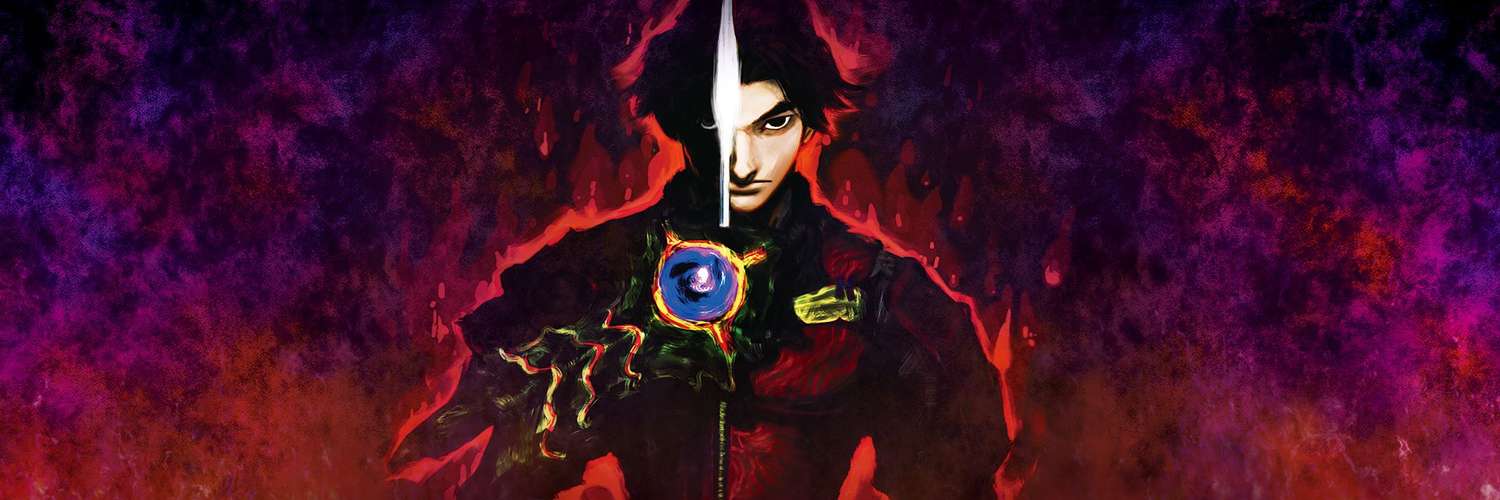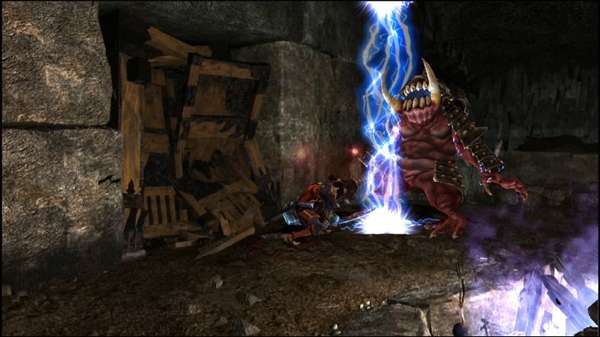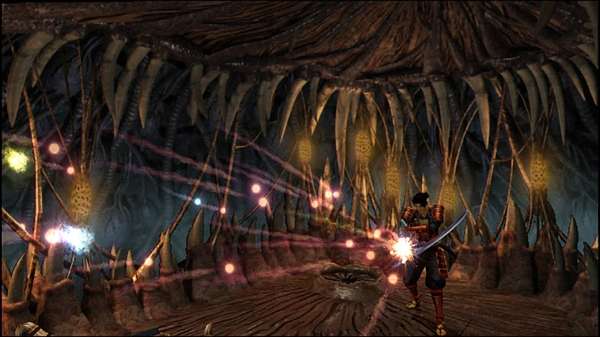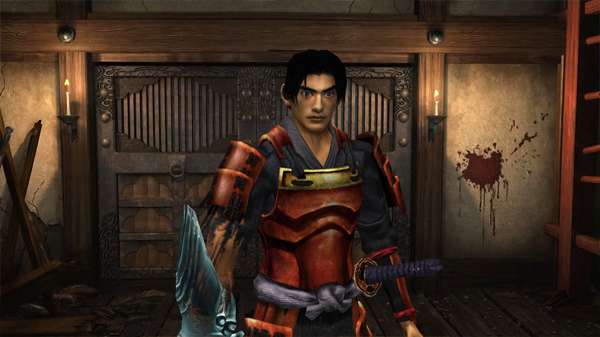
Onimusha: Warlords Xbox One Review
The original Resident Evil was a breakthrough hit that sparked all sorts of innovations, from its fixed camera angles, tank controls, challenging difficulty and horror-based atmosphere. As genre-defining titles go, Resident Evil is easily one of the most notable.
It was only natural that Capcom would copy the formula wholesale and spin it off into other potential franchises: this included replacing the zombies with dinosaurs (Dino Crisis), emphasizing the action to create a more over-the-top, less horror-focused spinoff (Devil May Cry), and in the case of Onimusha, pit samurai against demons in historical periods of Feudal Japan.

For their debut onto the newly-launched Playstation 2, Onimusha: Warlords represented the next evolution of Capcom’s patented Survival Horror series of games. On the outset, the game featured many of Resident Evil’s trappings, including pre-rendered backgrounds, tank controls, and a violent, moody atmosphere. The big difference was a heavier emphasis on action, in which the game encouraged players to fight back against the monstrous enemies instead of fleeing from them, as well as significantly higher production values including high quality cinematics, a sweeping orchestral score and actual likenesses and performances from big name Japanese actors.
The Onimusha series was successful enough to enjoy three more sequels (including one particularly infamous game featuring the voice and likeness of actor Jean Reno), but seemingly ended its legacy on the PS2, never to make the jump to the following console generations. But since Capcom has been looking at their back catalog of forgotten franchises for possible revivals, it was only a matter of time until Onimusha got its shot for a new generation, though for now fans will have to settle for a remaster rather than a full-blown remake or sequel.
Onimusha: Warlords is exactly what is advertised: a re-release of the original PS2 games with spruced up visuals and adjustments to make it more presentable for the current console generation. For those new to the series, the first game’s backdrop is the Battle of Okehazama, in which legendary figure and recurring videogame boss Nobunaga Oda is killed by a stray arrow following his victory over his enemy Yoshimoto. A year later, rumors of a resurrected Nobunaga and a demonic army at his disposal cause chaos across the land, leading to the abduction of main hero Samanosuke’s cousin, Princess Yuki. Together with his ninja partner Kaede as well as a magic gauntlet bestowed to him by ogres (seriously, that’s all the explanation you get on that particular backstory), the samurai storms Inabayama Castle to rescue the princess and stop the demonic plot that threatens the world.

Originally released before Devil May Cry, Onimusha: Warlords was Capcom’s biggest attempt at a more action-focused variant of Resident Evil; whereas RE focused more on limited ammo and fleeing over fighting, Onimusha instead encourages players to take out every enemy standing in their way, no matter how imposing. Fortunately, the game also provides the tools necessary to face the opposition, including several deadly weapons, each with their own unique combo strings and magic attacks, as well as an expanded control scheme that includes blocking attacks and four-way dodging.
Each defeated enemy will also drop souls, which can then be sucked up by the aforementioned magic gauntlet. The souls come in three flavors: red, yellow and blue. Red souls serves as the game’s currency for experience points, as each weapon Samonosuke retrieves can be leveled up with the requisite amount of souls. Not only is it beneficial to strengthen these weapons, it is also necessary to level up their corresponding orbs in order to pass through certain locked doors (examples include a door with two blue seals, requiring the Shinden orb that is associated with the lightning-infused Raizen sword to be upgraded to level 2). Yellow serves also restore health, while blue souls restore the magic gauge of the currently-equipped weapon, which allows for deadly magical attacks.

All of these weapons and techniques become instrumental against the demonic horde of enemies, which are far nimbler than the slow-moving zombies of Resident Evil. Even the lowliest grunts wield swords and will attack in different directions, while bigger and deadlier threats soon follow. This includes bosses, which are often the biggest and deadliest of adversaries, and can also prove to be a consistent point of frustration due to the game’s outdated camera angles. Copying the fixed perspective and pre-rendered backgrounds of the RE series at the time, Onimusha’s more fluid combat is often hampered by off-screen enemies landing cheap hits as well as sudden shift perspectives when running around to avoid the enemy’s advance. A welcome improvement to this remaster is the ability to move with traditional analog controls, while the original tank-based movement is permanently mapped to the D-pad. The downside to the more convenient control scheme is that several enemies are rendered trivial, thanks to the ability to simply run around them to avoid attacks, rather than having to stand firm and block or dodge out of the way.
Speaking of the pre-rendered backgrounds, the game’s visuals are unmistakably part of the PS2’s first wave of titles, but still hold up fairly well today thanks to an HD sprucing up. Unfortunately, Capcom chose not to put the same amount of effort as they did on the HD remaster of Resident Evil Remake; rather than re-do the backgrounds from scratch, Onimusha’s pre-rendered backdrops have instead been blown up to accommodate widescreen televisions, and while the results are adequate enough, there are also moments of artifacts and other blemishes that are typically the result of blowing up images that were originally lower in resolution. The character models fare much better, though the newly-textured face for Samonosuke (due to licensing issues with the original actor, which also results in new voice acting for the Japanese audio) suffers from some really wonky expressions where his eyes pop out more cartoonishly than what was probably intended. It should also be noted that the entire soundtrack was changed due to a scandal involving the original composer (feel free to look it up, because it would be too long to discuss in this review). While the new music carries the mood of the original just fine, it does lack the more iconic character themes, particularly Samonosuke’s.

Beyond those changes, this is still the same game as the PS2 original, and much of the gameplay still holds up, minus some cheap one-hit death puzzles that prove extra frustrating since they occur during some unskippable cutscenes. While the experimental combination of Survival Horror and Capcom-style Action proved more successful with its sequels, Onimusha: Warlords is still an entertaining prototype that is worth a revisit for fans and a first look for newcomers.
